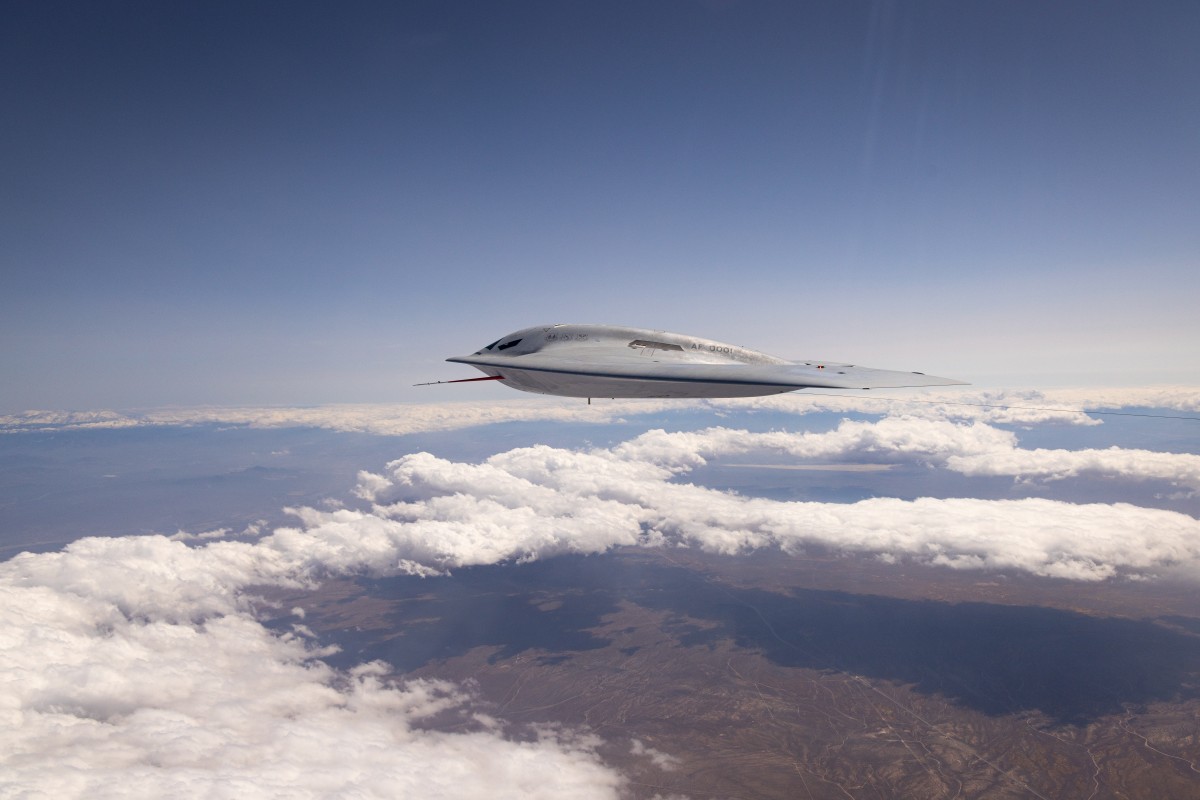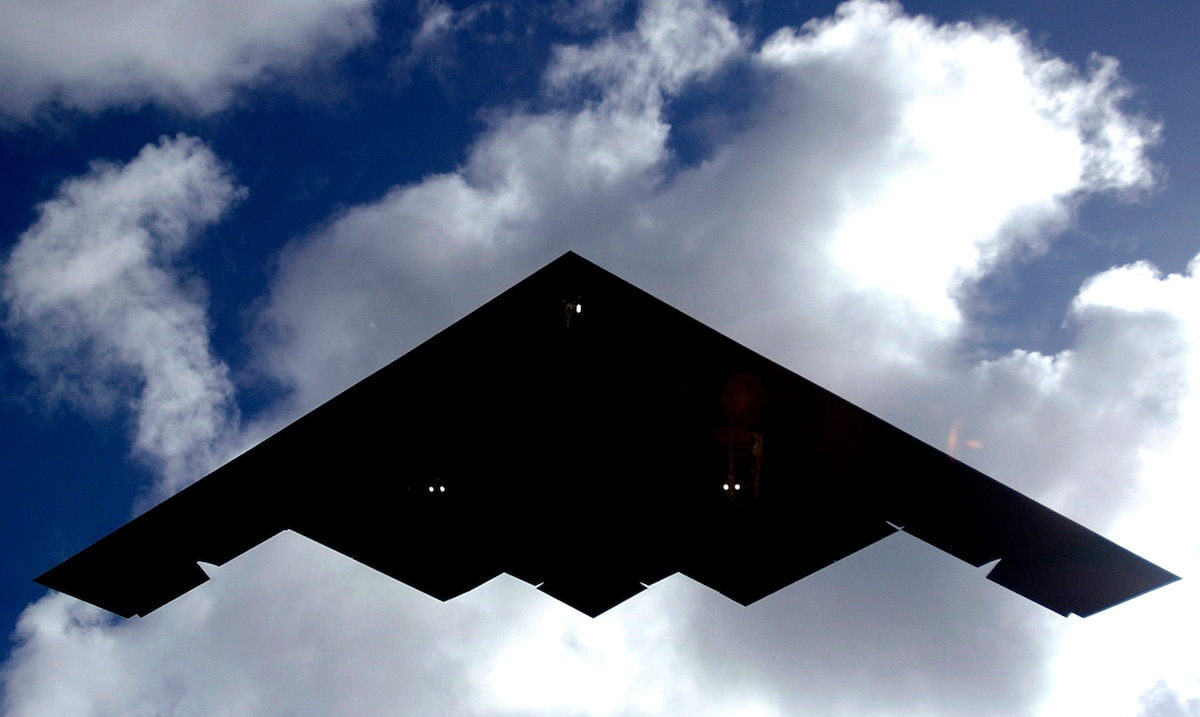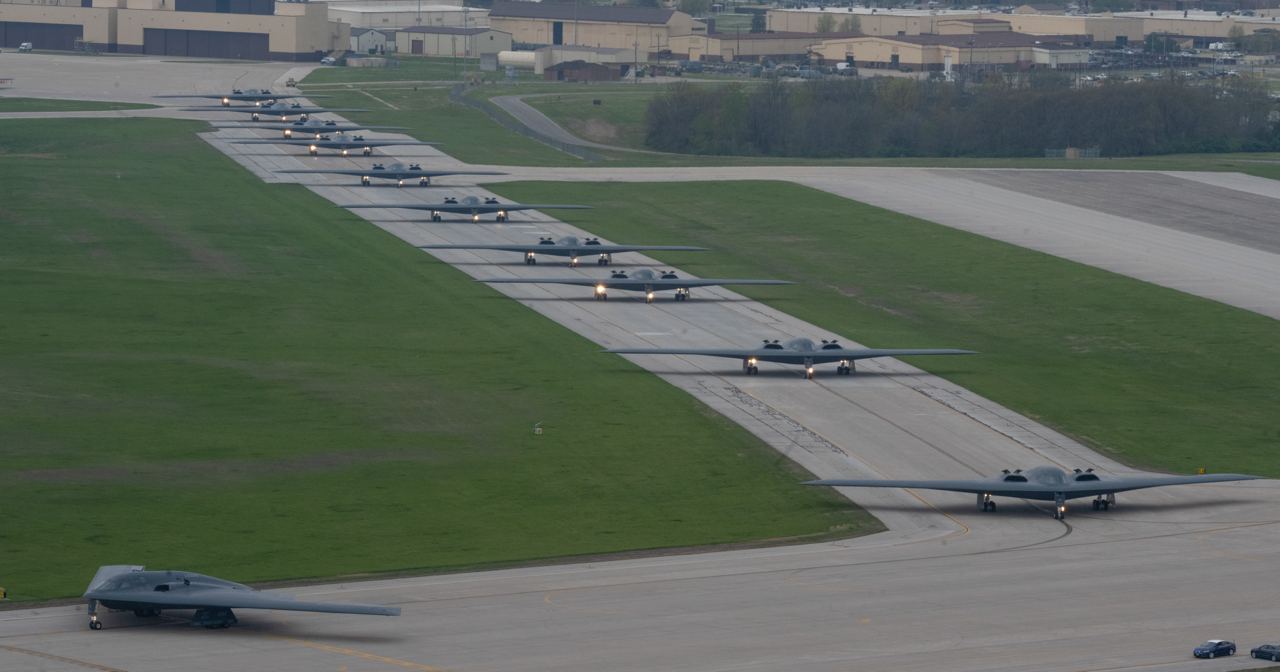The United States Air Force recently released the first aerial image of its new and mysterious B-21 Raider. Because of its somewhat similar looks, the new stealth bomber has been compared to the B-2 Spirit.
The images have sparked interesting observations by netizens, military watchers, and analysts. The distinctive exhaust system seen during takeoff caught the attention. Unlike the B-2, which featured a boxy, sugar-scoop exhaust, the B-21 exhibits a narrow, 2-D exhaust embedded in the jet’s tail.
Alex Holling, a former US Marine and an editor with Sandboxx News, drew attention to the air intakes. Posting a photo of both the bombers in the same frame, he wrote on Platform X: “Side profile comparison of the B-21 and B-2. Those air inlets are so recessed, you can’t even see them!”
The B-2’s design concentrates on heat dissipation, which reduces the aircraft’s infrared signature and helps avoid radar detection. Upon closer inspection, the pictures show an additional air intake above the engines, intended to supply more airflow when the aircraft rotates nose-up.
Because the main air intakes are top-mounted, this feature compensates for limited air intake at high angles of attack. The B-21 has the same scalloped design as the B-2 to maximize airflow.
The air intakes have undoubtedly become a talking point. However, other intriguing features have also caught attention. One stark contrast, for instance, is the new bomber’s windscreen compared to the B-2.
When the USAF first revealed the bomber’s images, the windows were flagged as “bizarre.” The latest images, showing the stealth next-generation bomber in flight, have provided a better look.
The vertical, not the horizontal, field of view has been prioritized, and the windscreen seems to provide a somewhat limited forward field of view to just forward of the aircraft, as noted by WarZone. It noted that in comparison to the B-2’s wraparound windscreen, the B-21’s cockpit is entirely different.
It is believed that with technology becoming more advanced, it is easier for pilots to turn to technological solutions to see outside. Features like vision systems, computer-generated terrain avoidance synthetic vision display capabilities, and in-cockpit augmented reality ensure sighting without the bigger windows.
Another theme on social media was the aircraft’s appearance resembling an alien ship. The B-21 is expected to be a huge aircraft but still somewhat smaller than the iconic bomber that it is meant to replace. As recently noted by EurAsian Times, at a projected wingspan of approximately 140 feet, it is smaller than the B-2’s 172-foot wingspan.
The cockpit design, with its small trapezoidal viewports tailored for signature control and the forward windscreen optimized for aerial refueling, can be seen clearly. Another notable feature is the fuselage, decorated with symbols representing Air Force Materiel Command, the 412th Test Wing, and Global Strike Command. The aircraft’s serial number (0001) is visible, although the typical year of acquisition is absent.
The photos of the aircraft, taken from various angles, offer a deeper understanding of its technological advancements and strategic significance because the USAF has kept the aircraft mysteriously away from the public eye. What is more significant is that the B-21 has already entered production and is meant to replace 45 B-1s and 20 B-2s in the next decade.
The B-21 bomber is designed to penetrate impenetrable airspace, which sets it apart from the older bombers in the USAF fleet.
Several military watchers, impressed with the new B-21 photographs, argued that the B-2 would eventually be replaced by this new war machine. The B-2, while archaic now, is still very much a force to reckon with. As the B-21 hogs the limelight with its new pictures, we look back at the iconic B-2 bomber.

B-2: An American Icon
Designed for covert nuclear and conventional strikes, the B-2 Spirit is one of the three strategic bombers used by the USAF. Although the aircraft was developed for the Soviet air defense network and a potential nuclear attack, its mission has expanded to encompass conventional precision attacks.
The bomber was deployed in Libya, Afghanistan, Iraq, and Kosovo at the height of military operations in those combat zones.
The B-2 bomber is the only one of three types of bombers still carrying nuclear gravity bombs and is considered to be the most sophisticated bomber in the US inventory. The B-2A Spirit stealth bomber was equipped with the B61-12 nuclear bomb, making it the first aircraft in the US Air Force (USAF) inventory to be equipped with the lethal weapon.
The B6-2’s nuclear armament options still include the B61-7, B61-11, and B83-1 bombs, according to the NNSA (National Nuclear Security Administration is a United States federal agency responsible for safeguarding national security through the military application of nuclear science) most recent SSMP (Stockpile Stewardship and Management Plan is a key planning document for the Nuclear Security Enterprise) report. The Spirit is the only aircraft authorized to use any of these bombs.

Although the permanent residence of these bombers is the Whiteman Air Force Base in Missouri, a limited number of B-2s can also be used out of RAF Fairford in the United Kingdom and Andersen Air Force Base in the Pacific, on the island of Guam. The B-2 bombers are expected to play a major role in any potential conflict with China in the Indo-Pacific.
The B-2s have been engaged in power projection against US adversaries. In August last year, the B-2 Spirit bomber carried out a historic hot pit refueling at Orland Air Base, Norway, marking the stealth bomber’s first landing in the Scandinavian nation.
The significance of these bombers was underscored in a massive drill last month—perhaps a show of power. Amid rising tensions with China and Russia, the US Air Force flew 12 B-2 Spirit stealth bombers from the Whiteman Air Force Base (AFB) in Missouri. The drill aimed to hone the logistical and operational procedures of strategic bombing strikes during conventional wars.

According to reports, it was one of the biggest B-2 takeoffs in recent memory since the last fleet operation of its kind took place during Spirit Vigilance 2022. The drills with 12 B-2s comprised 60 percent of the stealth bomber fleet, reflecting the intensifying geopolitical and military significance of these stealth bombers.
While B-2s have a reputation as the most maintenance-intensive and costly combat platforms in the USAF inventory, they are still the bedrock of the air component of the US nuclear triad.
While the B-21 Raiders are the future of combat, the B-2 has a legacy. For now, despite incidents of growing and waning popularity, the Spirit remains an icon that the USAF cannot do without.
- Contact the author at sakshi.tiwari9555 (at) gmail.com
- Follow EurAsian Times on Google News




